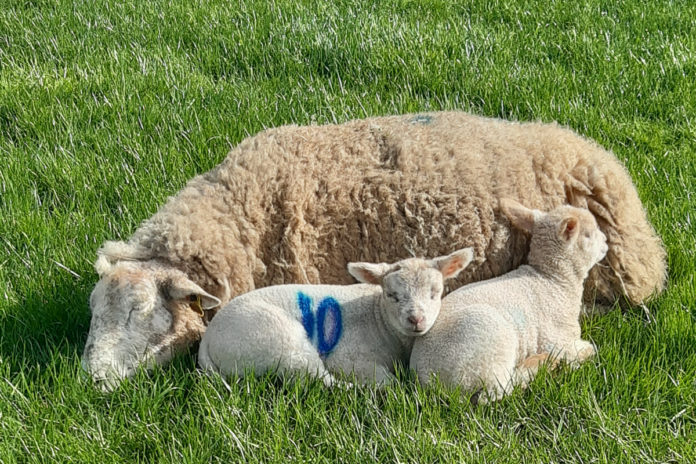New Zealand farmers claim that they are “the first in the world” to breed low methane-emitting sheep.
AgResearch scientist, Dr Suzanne Rowe, leads the research programme, which aims to breed animals to combat climate change.
She says for, over the past decade, they have been running two closed flocks, side-by-side:
- Low methane emitting flock;
- High methane emitting flock.
Each flock comprises 100 composite ewes and researchers managed each flock the same. Through the Central Progeny Test programme, they identified ewes as either low or high emitting.
Scientists identified genetic differences which influence how much methane an individual sheep produces.
Low methane-emitting sheep
According to Dr Rowe, on average, they have identified an 11% per unit of feed difference in methane emissions between the two flocks.
Furthermore, she said there appears to be no difference in the health, productivity, or profitability between them.
She said researchers often see more lean growth, carcass yield and wool production in the low methane sheep without any negative trade-offs.
New Zealand launched a breeding value for methane emissions in November 2019.
This resulted from a 10-year breeding programme Pastoral Greenhouse Gas Research Consortium (PGGRC) and the New Zealand Agricultural Greenhouse Gas Research Centre funded.
According to the researcher, this breeding programme has confirmed that methane emissions are heritable.
By breeding for this low methane genetic trait, scientists have demonstrated that after three generations, the lowest emitting sheep produce close to 13% less methane than the highest emitters, per kilogram of feed eaten.
While researchers expect the actual methane reduction at the farm scale to be less when sheep are also being bred for other desirable genetic traits, it is still “significant”.
According to researchers, they have found lower-emitting sheep to be otherwise healthy and productive when it comes to their meat and wool.
When breeders incorporate this methane breeding trait into New Zealand’s entire sheep flock, they believe the methane reduction could be in the region of 0.5-1% annually.
Therefore, they are of the view that this will be “significant” as it accumulates over time.
“Research like this is critical for the agriculture sector, which produces almost half of New Zealand’s greenhouse gas emissions and needs practical tools to help achieve a reduction target of 24-47% less methane by 2050,” Dr Rowe said.
Now, Rowe is also assisting with research into breeding lower methane emitting cattle.
Other articles:





